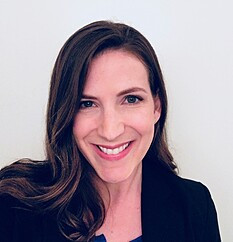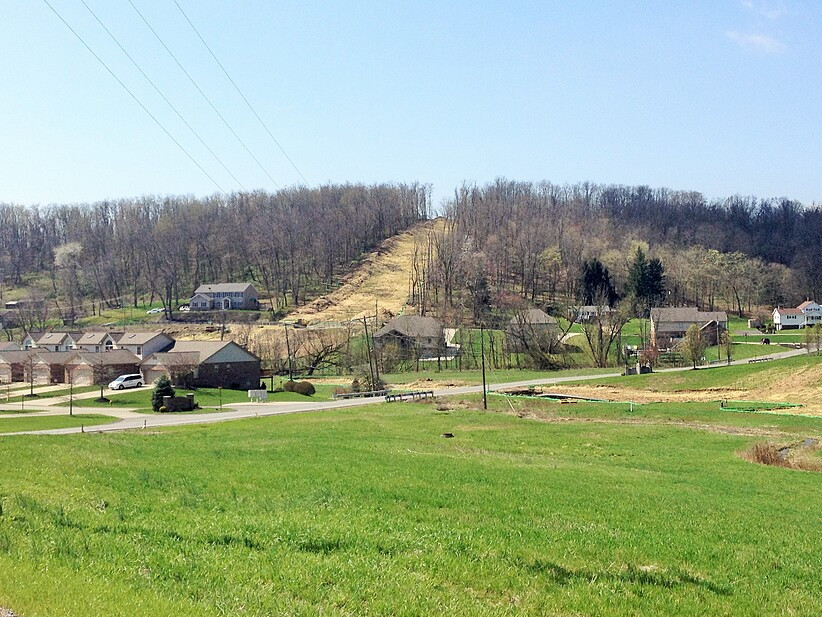 Samantha Malone Rubright, DrPH, CPH is one member of a small, non-profit organization called FracTracker Alliance. The goal of FracTracker “is to help stakeholders understand oil and gas data so that they can make informed choices and affect protective policy decisions.”
Samantha Malone Rubright, DrPH, CPH is one member of a small, non-profit organization called FracTracker Alliance. The goal of FracTracker “is to help stakeholders understand oil and gas data so that they can make informed choices and affect protective policy decisions.”
“Hydraulic fracturing, or fracking as it is called, is just one part of drilling for oil and natural gas today. Fracking is a stimulation process that uses lots of water, injected at high pressure into the ground, along with chemicals and sand, to fracture the earth and bring the resources to the surface. Drillers use unconventional methods like fracking to extract oil and other hydrocarbons from underground because these resources are not in easily accessible pockets or reservoirs,” Dr. Rubright explains.
These unconventional drilling processes are used throughout the country, but there was not a lot of pushback until it moved into the Northeast, including in Pennsylvania, which is where FracTracker got its start 9 years ago.
“In 2009, people with concerns about fracking in Southwestern Pennsylvania started calling into a community based participatory research center at the… Graduate School of Public Health at the University of Pittsburgh. I was working there along with some other researchers at the Center for Healthy Environments and Communities. We started fielding a lot of phone calls and emails from people in the Southwestern Pennsylvania area who were concerned about this industry. We really weren’t familiar with it as researchers at the time. [Additionally,] a publicly accessible database showing the location of unconventional drilling, as well as the violations associated with this industry, [wasn’t] available from either industry or regulatory sources in Pennsylvania. So, we started FracTracker.org in 2010 at the University as sort of a way to track the industry in Pennsylvania. We were doing it manually in some cases – following news articles where they mentioned a violation that had been issued through the state,” Dr. Rubright shares.
Since creating the original website as an academic project through the University, fractracker.org has become the non-profit organization, FracTracker Alliance, and now has offices in 5 states including Pennsylvania, New York, Washington, D.C., Ohio, and California, and produces many more resources for people living in areas near oil and gas activity. Those resources include maps showing were oil and gas pipelines are located throughout the country, as well as an app for reporting and collecting data about different oil and gas projects and issues.

“[The app is] a convenient resource for those who seek information about drilling and pipelines near them, and it’s an outlet for posting photos about this industry, reporting incidents, and sharing insights on the ground,” Dr. Rubright explains.
Another benefit of the app is its ability to collect data from a large group of people and create a database and centralized location for documentation about oil and gas projects. In some cases, it is also being used to document health concerns and also to educate the public about were pipelines are located.
Some of these health outcomes vary depending on proximity to the site and what type of site it is. Those living near a well pad might experience stress from excess light and noise. Others may notice air quality reductions or water contamination.
Dr. Rubright notes that, “recent health studies have suggested that pollutants released during unconventional drilling can exacerbate asthma, produce negative birth outcomes such as low birth weight, and increase cancer risk. Everyday, more and more research about these endpoints, among others, is coming out.”
Additionally, “if a drilling operation, the actual well pad, or even an old well that has already been finished, contaminates an underground drinking water reservoir, then anyone who uses that reservoir can be exposed to harmful compounds for quite a long time because it’s difficult to clean up those water sources after contamination occurs,” Dr. Rubright explains.
She also mentions that pipelines carrying methane can cause health effects for people living virtually anywhere in the world due to methane’s impact on climate change.
“It’s important to remember that the entire oil and gas network leaks methane. It’s just a very difficult compound to keep contained without significant monitoring on [the industry’s] part, and we do know that methane leaks from the oil and gas industry contribute to climate change and the health impacts that result from it,” Dr. Rubright shares.
That means that, no matter where you live, fracking and its related activities could impact your health.
So, you might be asking what you can do to combat this. Well, Dr. Rubright wasn’t short on suggestions.
“If you download our app, you can submit reports about what’s occurring near you. This monitoring not only helps people in your community see what’s going on and the media as well, but it also keeps industry honest. They know folks are out there watching so that they are more likely to adhere to the rules and regulations in place.
“I have [also] been seeing … a lot more people getting involved in their local politics: participating in city council, seeking state office. I think that’s extremely important if you are concerned about this industry or want to learn more. It’s really great to be involved in those kinds of activities - you can help regulate industry or prevent it, if that’s what you want, from occurring near you.” Dr. Rubright suggests.
While there is quite a bit more research needed related to fracking, its health effects, and its effects on our environments, it is never too early to collect data and get involved in processes to make the industry safer.
To learn more, visit fractracker.org or download their app, which is available for both Android and iOS devices.
We wanted to find the best young researchers and advocates who might change the future of environmental health. So, we asked a panel of luminaries in environmental health to nominate rising stars who are doing pioneering work. After a rigorous selection process, we invited 20 of these nominees to be our 20 Pioneers under 40 in Environmental Public Health.
In March, we held our ninth webinar in the series. In addition to these presentations, we got to sit down and learn a little bit more about the researchers. While we did talk about their research, we also learned how they first got interested in the field and what this work means to them, plus a few tips for staying healthy.
